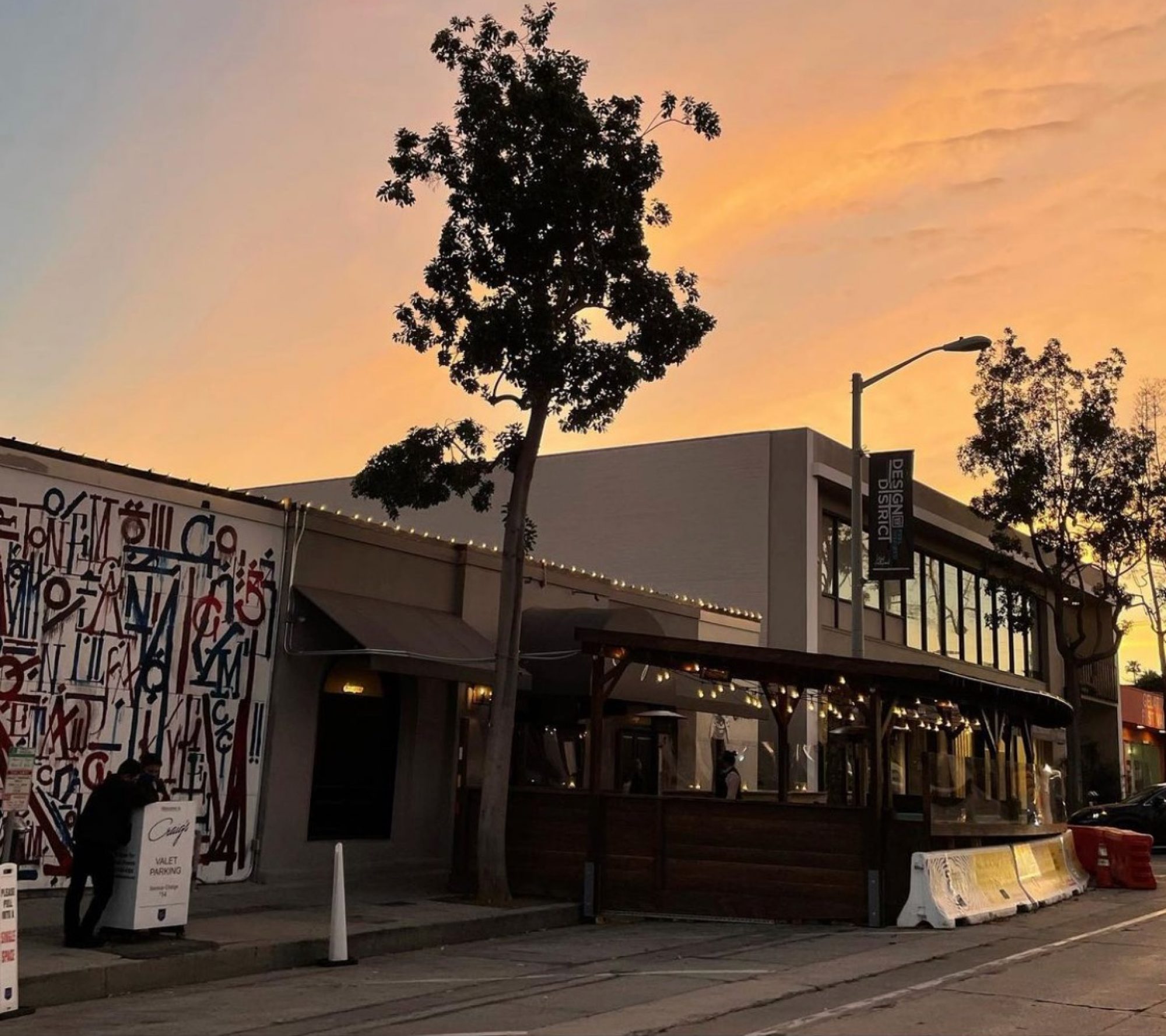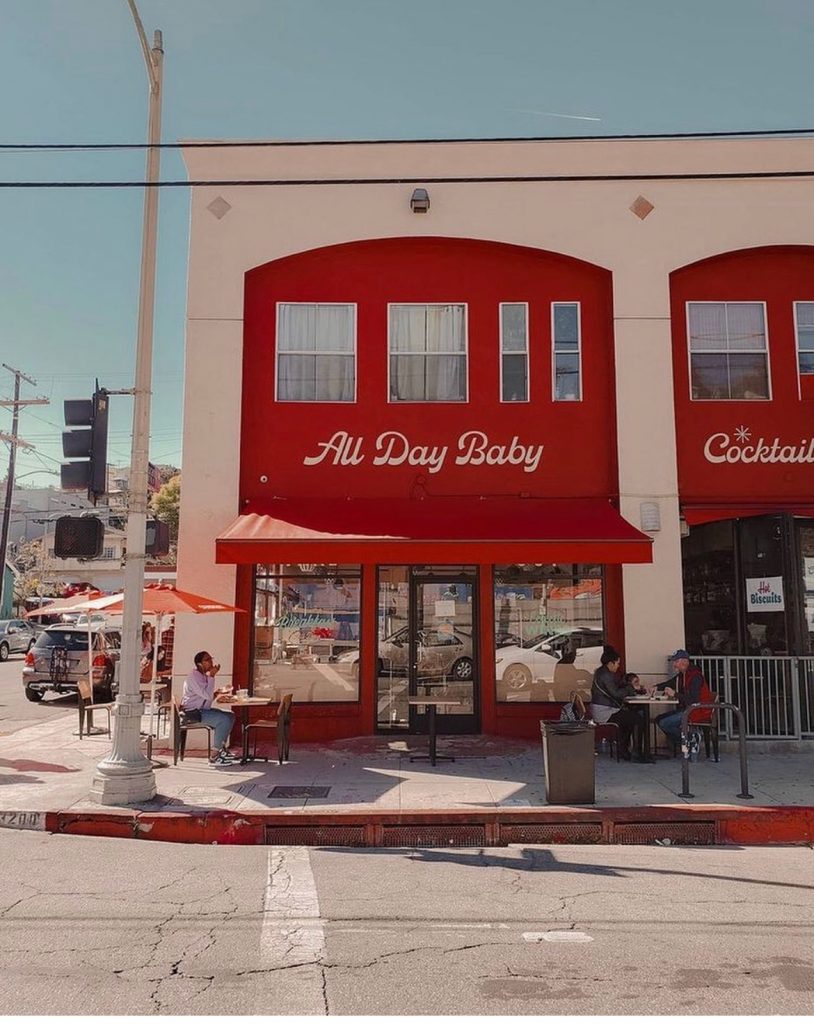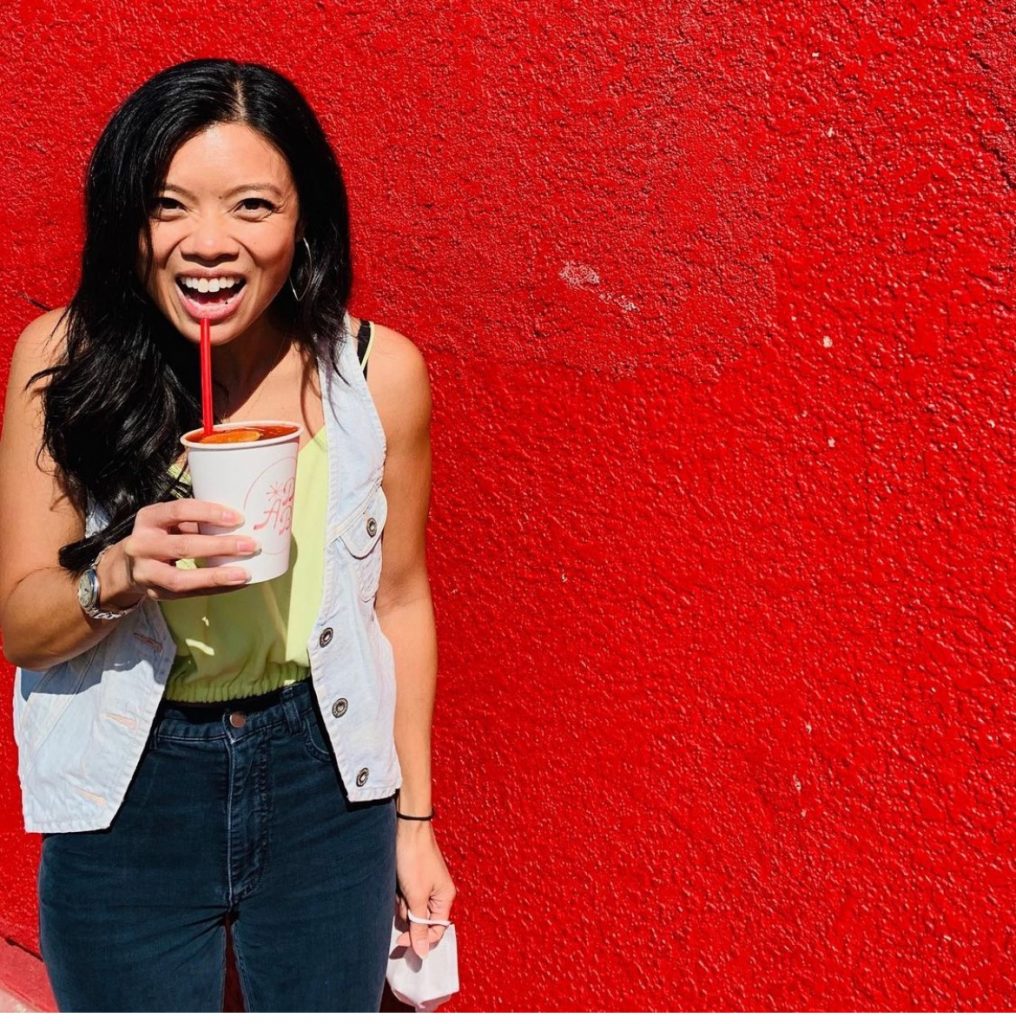People around the world have adapted and shown how resilient they can be in the face of the COVID-19 pandemic. Lives have been lost and those who are left will be dealing with the damage and repercussions for years to come. But the virus hasn’t broken us. It has, however, changed the way we break bread. The food and hospitality industry has been completely uprooted throughout the country and the solution to fix this still seems unclear to many.
Many extended families could not gather for meals at home and going out to eat became impossible thanks to measures meant to fight the spread of the virus. Who knew that one day people would desperately yearn for the ability to sit around a table with loved ones while sharing stories and conversations over a meal?
While restaurant goers stayed at home to try to do their part to stop the spread of the virus, restaurant owners and staff stayed out on the frontlines to ensure that they were able to feed their community. Fighting through these difficult times while feeling left behind by the government.
“They bailed out airlines and forgot about us. They got money to save jobs but if you also want restaurants to survive since they make up such a large sector of employment, there are things that need to be done. Nobody got creative when it came to how to save restaurants. We need sweeping aid,” said Lien Ta, the founder of All Day Baby in Silverlake.
Ta had lost her first restaurant Here Looking At You this past year and believes that while the future ahead may be optimistic, it may be too late for help, “We are well into the year into the pandemic and only now are we getting funding. It’s just too late, it is just too late for my first restaurant for example.”
It was only after March 16th, 2020 that many in Los Angeles county fully understood the true privilege of being able to go out to eat with family and friends. That was the day LA Mayor, Eric Garcetti, announced all restaurants and bars must end sit-down dining and switch only to take out for at least three weeks.More than a year later, some of those restrictions have only recently been eased and the food and hospitality industry in LA is still in turmoil with many places diners loved are gone, likely never to return.
“I remember March 16th like it was yesterday. I remember when I had to shut down that I needed to do something.” said Craig Susser of Craig’s American restaurant in West Hollywood, “We were all concerned about everyone’s well being and we thought what we were doing here was for the greater good. Everybody had the mindset that we will just pitch in. We will do what we have to do, this is just for three weeks until we have a handle on everything.” said Susser. Now, with times so tough for many restaurants, Susser has to struggle to recall that sense of community and purpose, “I try to remember and put my foot in my shoes back to then and what the mindset was. What was the goal? The goal was the lockdown for 3-4 weeks, get our heads around this thing, find out what we were dealing with and then we can move on. Having never gone through this, I don’t think any of the politicians or any of us had a handle on how to move forward.” Susser said.
He founded Craig’s in 2011, following a twenty-three year run working at Dan Tana’s in Los Angeles. The restaurant is well known for its comfort food menu and an elegant ambiance that attracts the likes of many celebrities. But even with take-out options, a restaurant that was known and once had bustling tables with the rich and famous, still faced a fight just to keep the lights on during the pandemic.

“They made a really smart decision to allow restaurants to do food to go from the beginning. Primarily, it was a lifeline to restaurants but they don’t understand the business model.” said Susser, “So they thought it was kind of a lifeline. Food to go is not exactly profitable. It starts to get really expensive when you have no money or very little money coming in and it is just not not-profitable. Let’s say you do $10,000 in a night, but it’s not a profitable $10,000. There is cash flow coming in but you are not really making a lot of money. It’s hard to distribute that back out.” said Susser.
That cut in cash flow has really impacted the Los Angeles economy. According to Eater Los Angeles, at the start of the pandemic, more than 800,000 workers in Los Angeles and Orange Counties work in hospitality. This represented nearly 15 percent of the total workforce of both counties at the time.
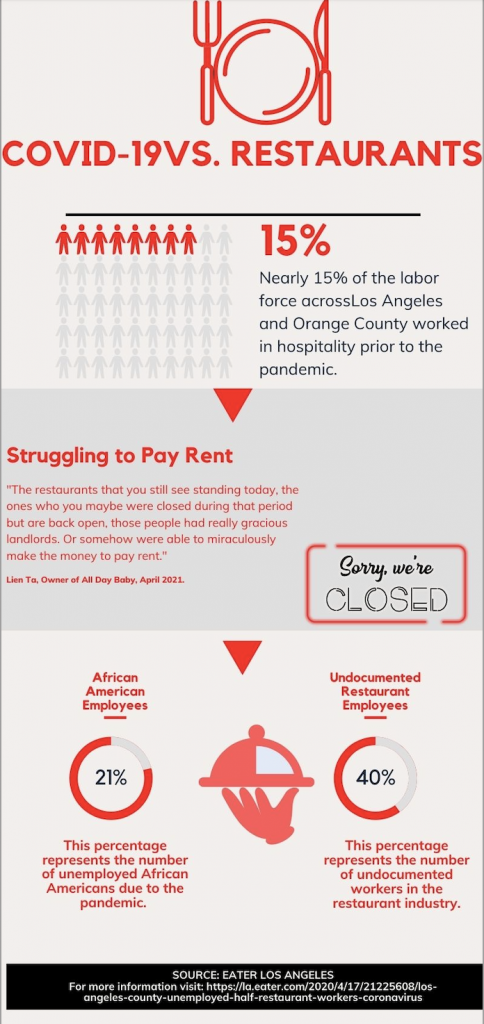
Despite having to invest in rearranging a new dining room that adheres to new county’s guidelines and PPE for all of his staff, Craig never entertained the idea of leaving any of his employees behind.
“I made the decision to keep all of the employees on. I was under the impression in the beginning that this was going to be short term. So, I’m like hey, it is really easy to say you’re a family when times are good, it’s really hard to say that when times are bad. That was kind of my philosophy. We are going to stick this out together.” said Susser.
So, he tried to make things work on take-out alone, knowing it was going to be hard, “Customers were tipping waiters for food to go and they were making some money then I was adding money into the paychecks in lieu of tips. The problem was I didn’t realize how long this was going to go on,” said Susser.
Craig’s was able to qualify for an APP loan which he stated was enough to pay salaries for 6 weeks. But that was only a temporary “band aid” as Susser put it and what he saw as still a complicated fix to help the restaurants.
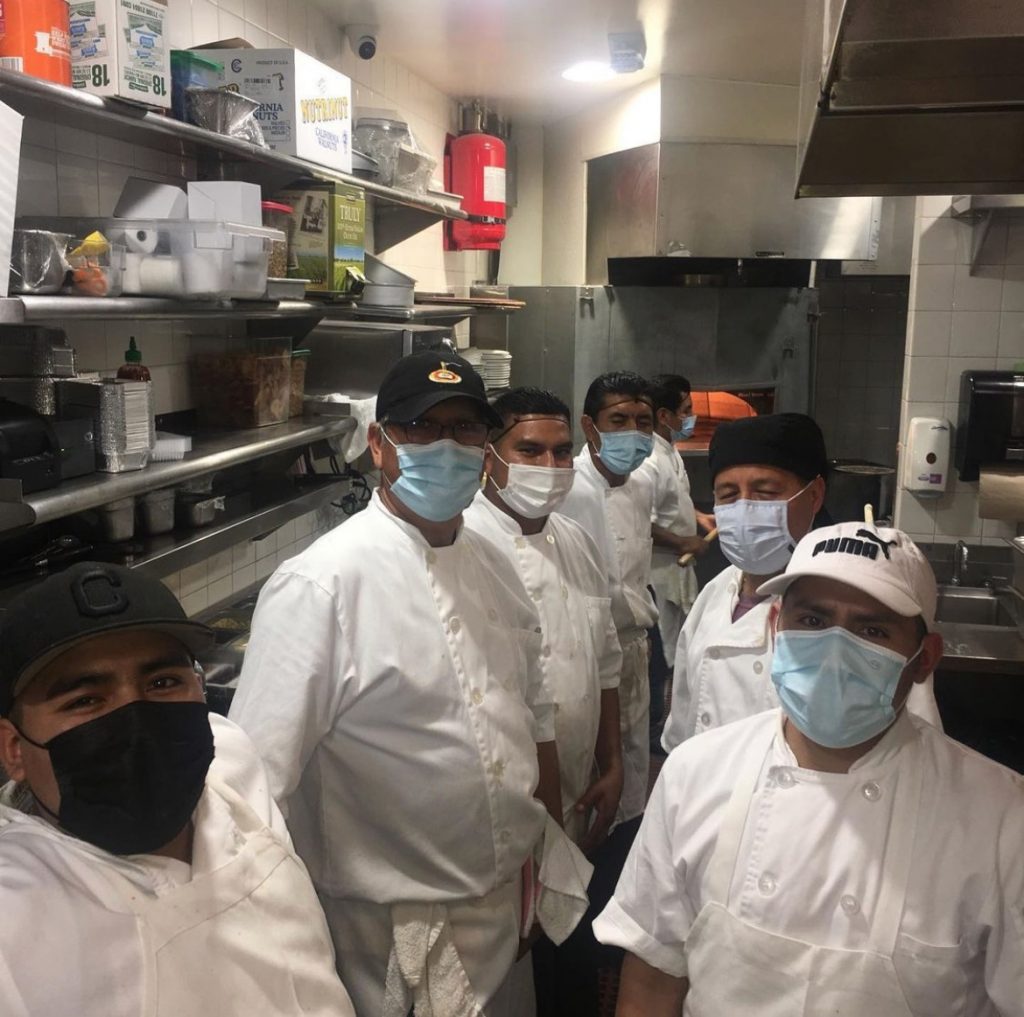
With many restaurants already struggling to pay employees, delivery and delivery apps such as Postmates, UberEats and Doordash became the only way to reach many customers. That’s created another problem for restaurant owners as delivery services cashed in on the surge in demand for their services.
“It was almost criminal what the delivery companies were and are doing,” said Susser, “They tried to increase their percentage for delivery. When it is your only source of income, even local governments tried to limit their percentages but then the apps started adding marketing fees. So in essence, it didn’t really change much. That is what made it impossible for so many restaurants and that is why so many of them just said hey we are going to close the doors. It’s not worth it,” added Susser.
Doordash and Postmates have not responded to me for comment on this issue but they have defended their stances publicly. On Doordash’s website they state “For our platform to succeed, it has to work for all of our users — merchants, Dashers, and customers. The fact is: delivery is cost-intensive. Many merchants didn’t offer delivery before partnering with DoorDash because hiring and paying drivers, purchasing insurance, and providing customer support is costly, especially when order volume can ebb and flow throughout the day, week, or year. For many restaurants, it just wasn’t workable. You’d have to be sure you had enough delivery drivers for your busiest night, but keep it affordable for your quietest afternoon. Instead, restaurants can partner with DoorDash, which manages all of those logistics and is inherently responsive to those changes because of our platform and Dasher community.”
Some experts also believe that delivery apps may be doing more harm than good.
“Right now these delivery services have a lot of power. They are imposing all these costs on restaurants and it has been very brutal,” said Dr. Kyle Mayer, Chair of Management and Organization at USC Marshall School of Business. “It takes time and scale to build your own delivery and pickup option through your own website. These apps are teaching consumers to come to them as a catalog to strictly go through them to order food. It is only helping them to become stronger,” Mayer said.
Susser also believes the apps hurt the relationships restaurants have with consumers in other ways. “There is a very direct connection between ourselves and our customers. When you are using a third party app, that delivery person does not have that attachment and doesn’t care. People automatically make that a reflection of the restaurant not a reflection of the third party app,” said Susser. “We stand behind our product and we stand behind our connection with our customers. Things get murky when a third-party app doesn’t have that especially when they are taking such a big cut,” Susser said.
Third-party delivery app companies say they actually help restaurants and give exposure to them through their platforms, but they also take fees anywhere from 10 to 25% of revenue generated from each sale. Jenn Harris, a columnist for the Los Angeles Times, pointed out another problem restaurants are having with these apps.
“This is the new form of dining and dashing. People are claiming that they never received their food after picking it up and the restaurants automatically accept these claims and charge the restaurants without any option of the restaurants to dispute these claims,” said Harris.
That’s because this new dine and dash scheme makes it hard for restaurants to dispute any claims filed by customers. “The restaurants are the ones who have to foot the bill,” Harris said, “I have heard stories from restaurants about them being on the phone with the app’s customer service for hours and no one picks up.”
Other experts, however, point out that there may be positive pandemic impacts for the restaurant industry if owners are willing to seize on new opportunities. “This is a once in a couple of decades type of thing to happen. I think if anything, the reason why everything is going to change it will be because of the change in the competitive landscape,” said Shon Hiat, professor of management and economics at The University of Southern California. “There is going to be a demand for consumers wanting to go back out after being cooped up for so long that there will be an opening for restaurants to open and meet that demand. People are hungry, literally and figuratively, for in-person shared experiences. It’s a matter now of how much people are willing to pay,” said Hiat.
Craig Susser sees the opening for the opportunity in the future leaving behind a year of struggle and hardship, “I had one of my mentors pass away from this, I don’t take this lightly. I’m not a denier, there is nobody in my organization who said that this is an overreaction. But boy do I pray for these restrictions to be over.”
(Lead Photo Courtesy of @craigsla on Instagram)
